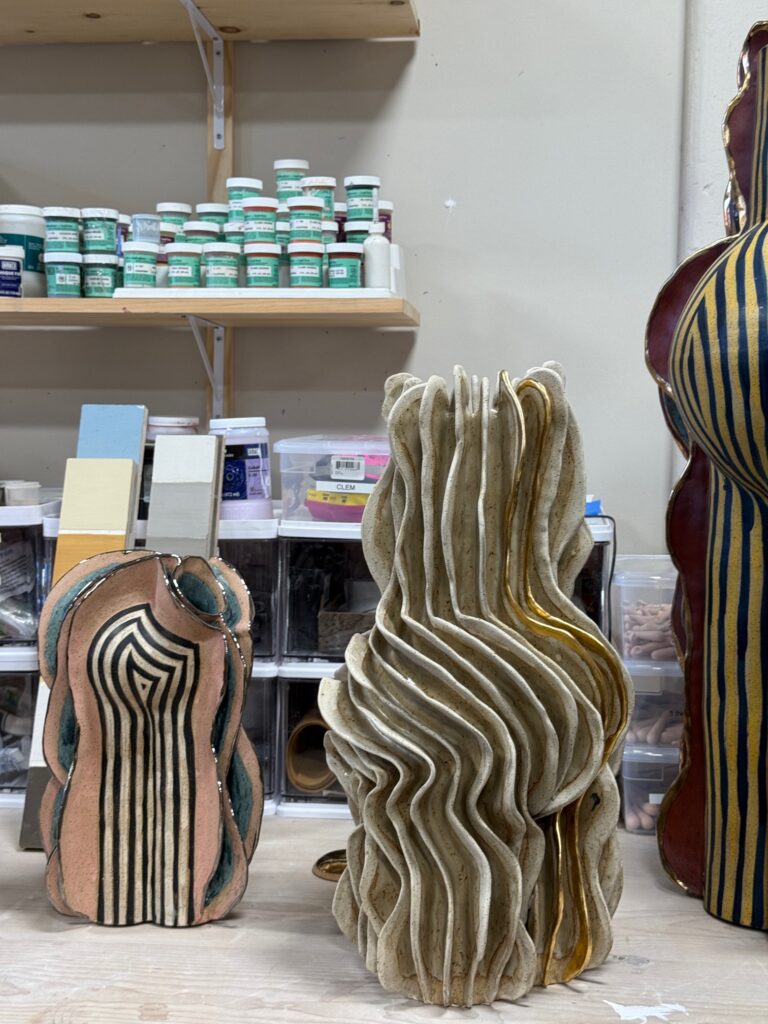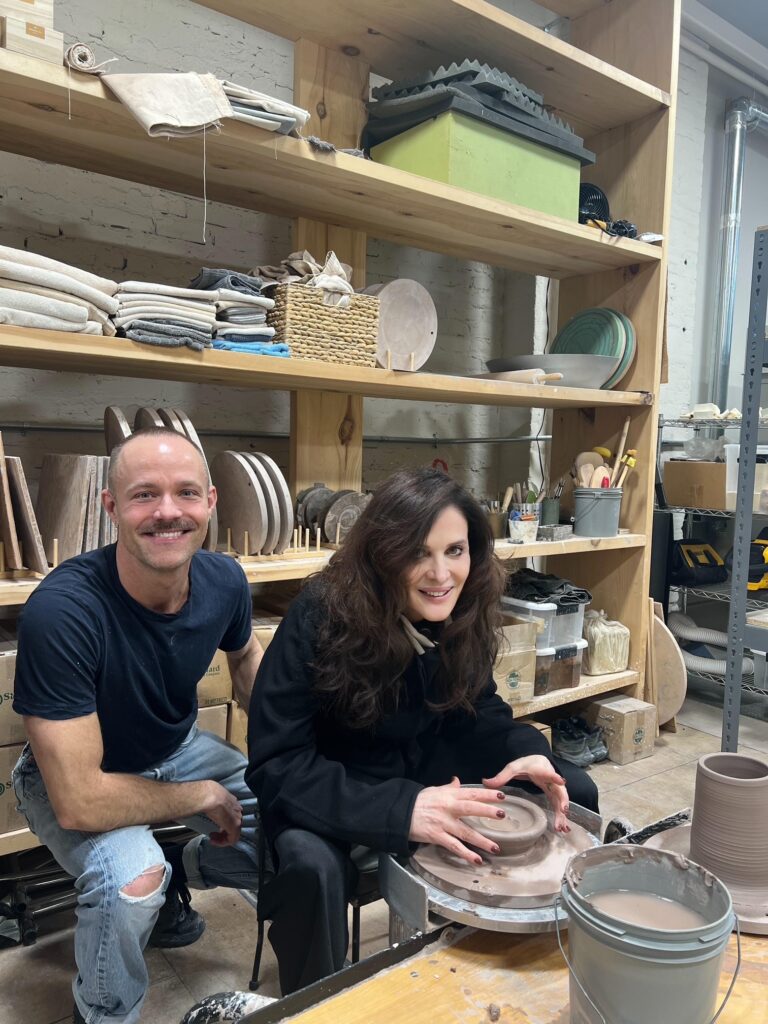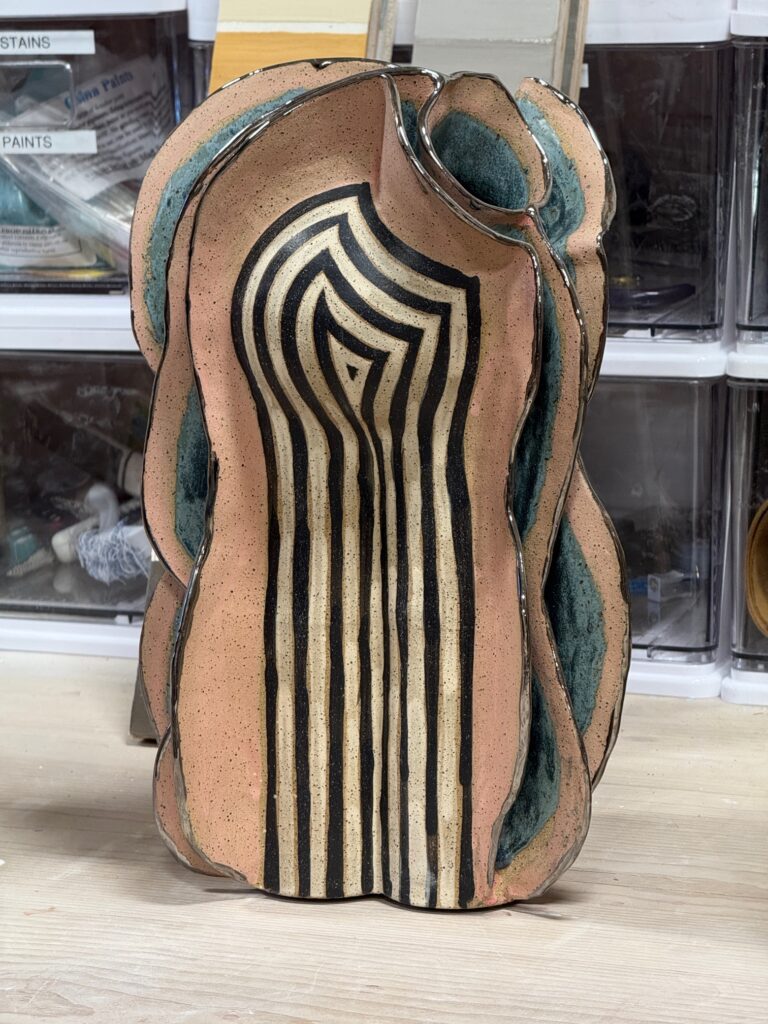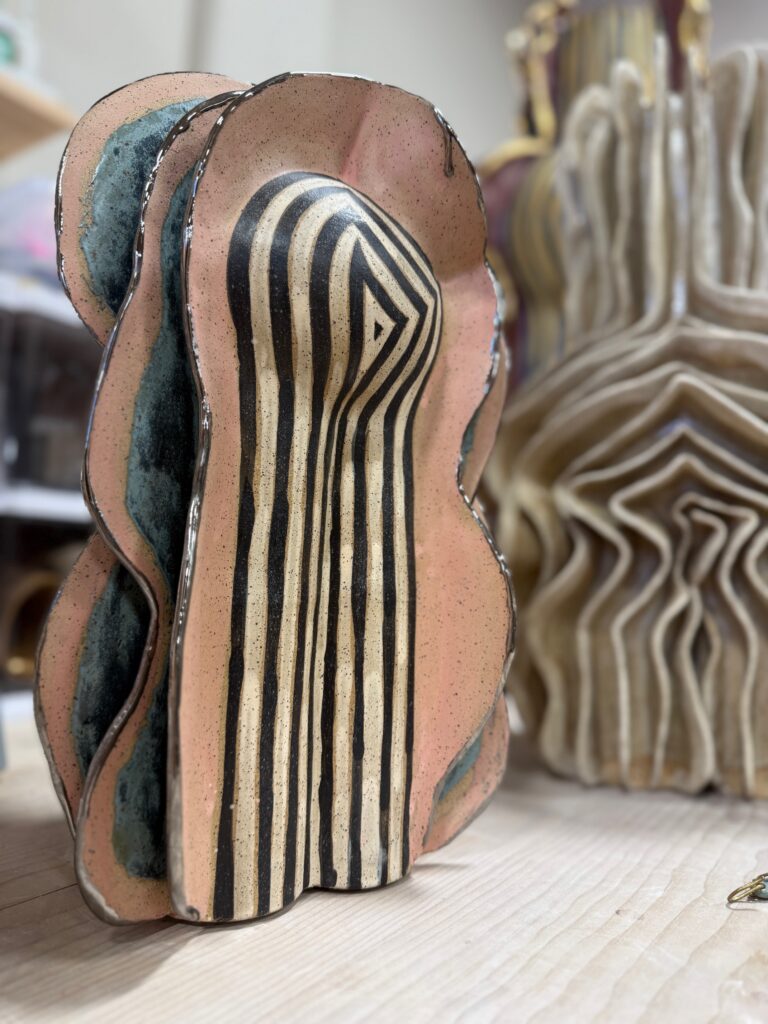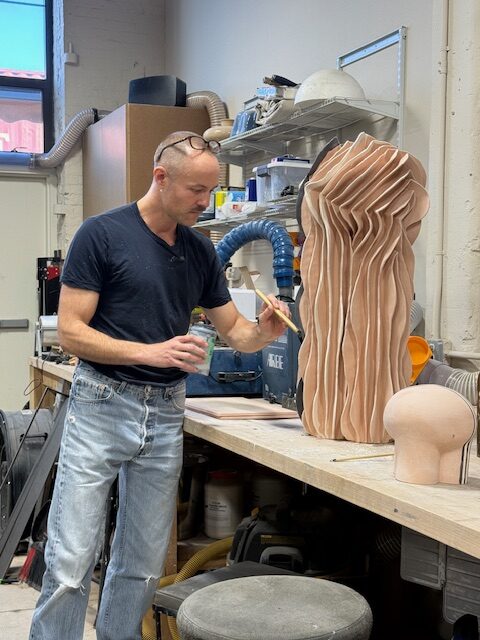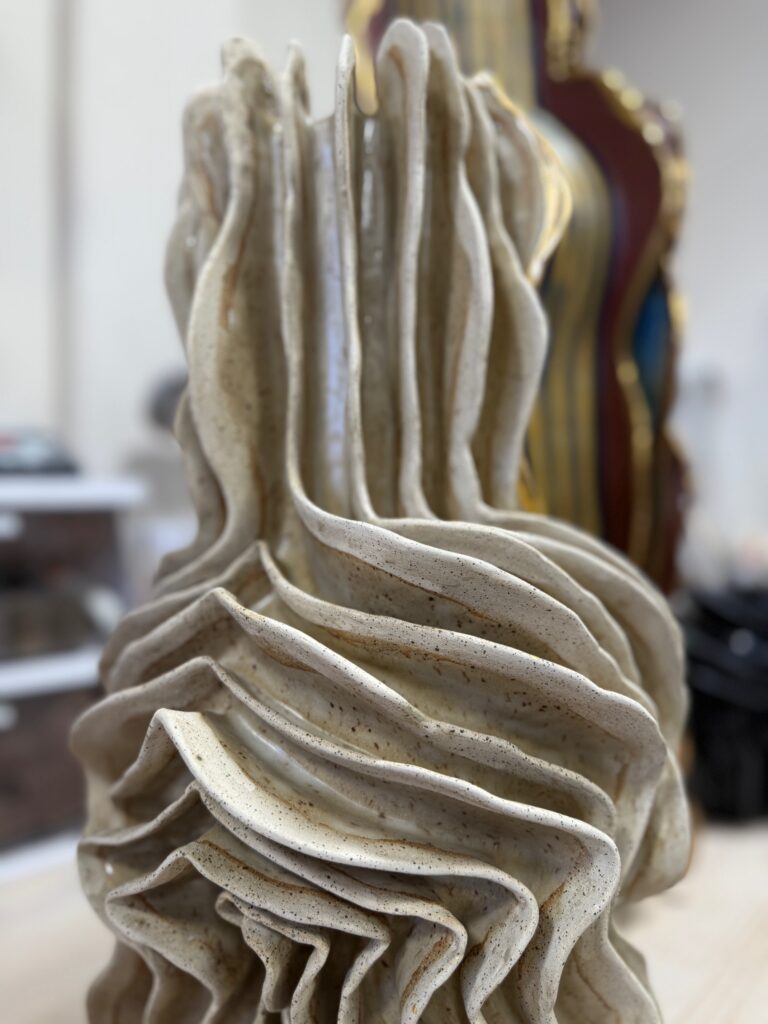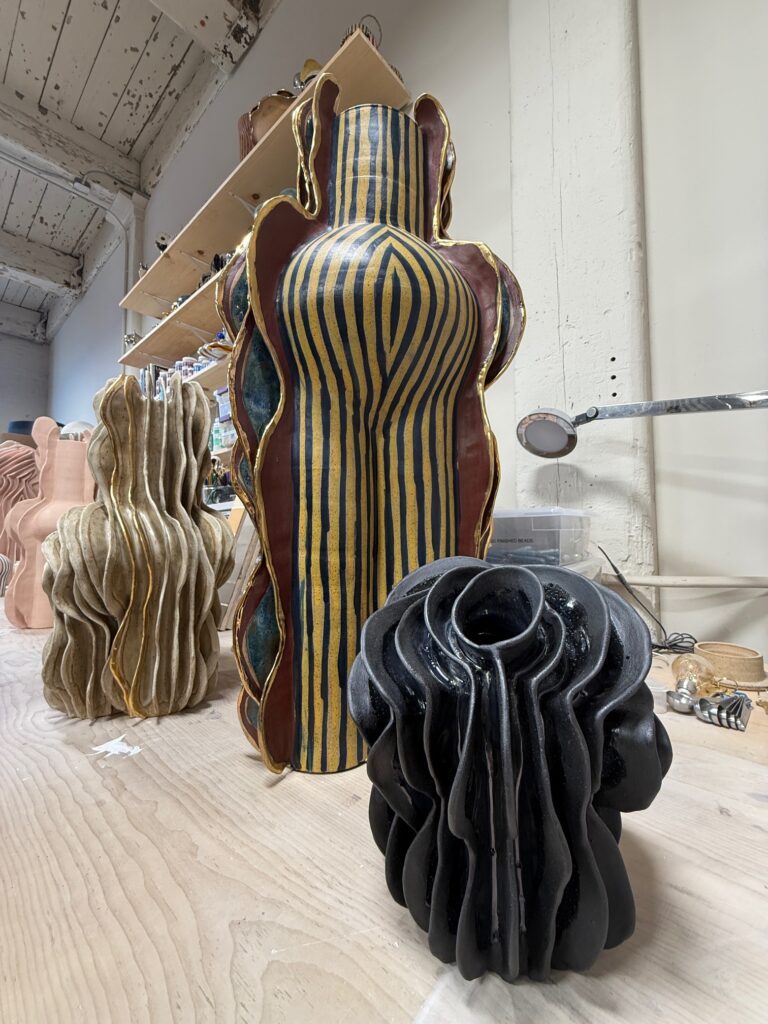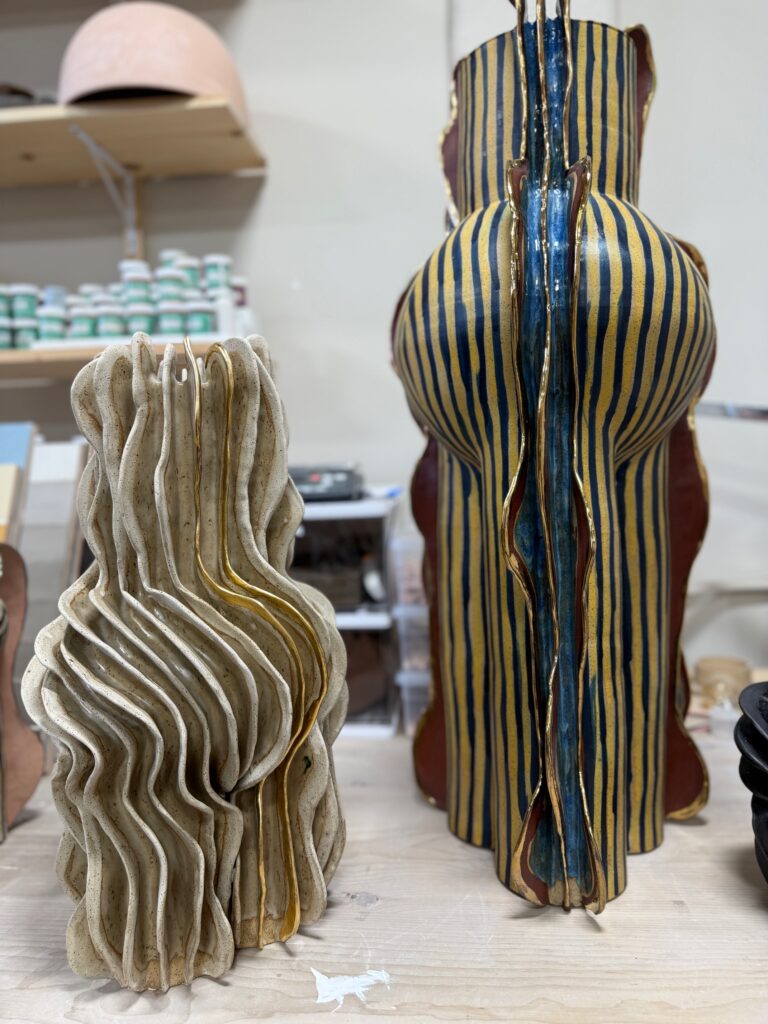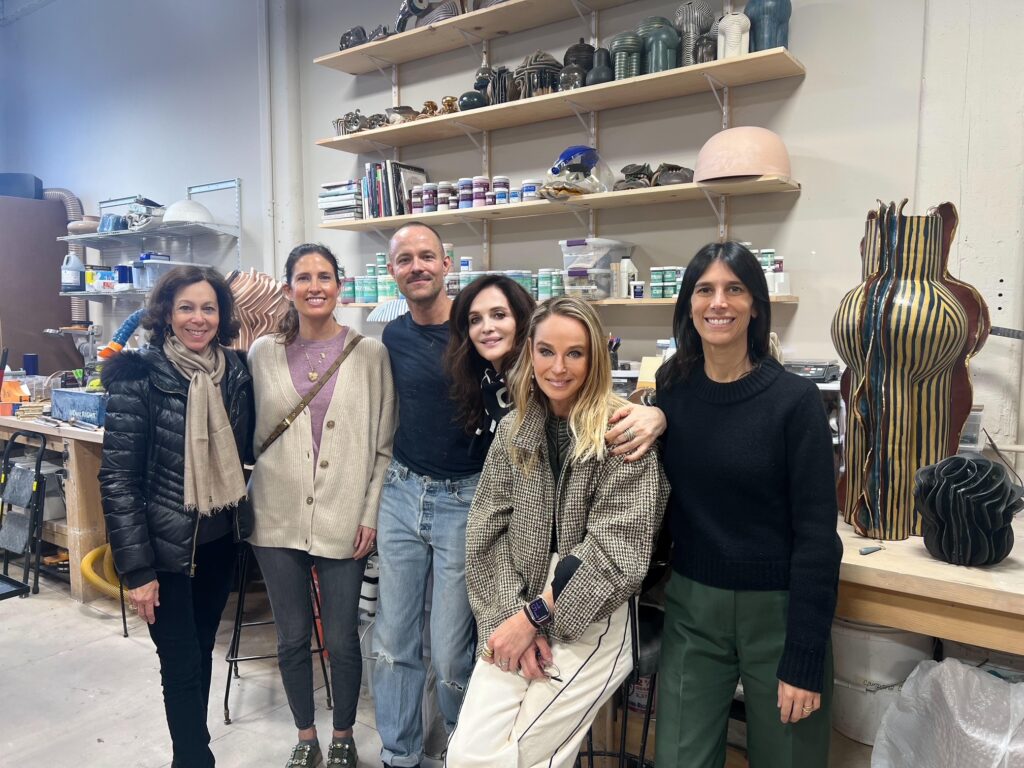
In the world of contemporary pottery, Jeremy Anderson has been doing things his own way. His sculptural vessels and lamps look like living creatures, often dressed in stripes, at times appear cartoonish, abstract, or primitive. These have recently gained admirers within the collecting design market. They are packed in chubby bodies, often wearing a hat or a dress and, or have their own expressive face. When you see them as a group, you think that they are performers in the circus or creature in a fantasy world of a science fiction film. Visting Anderson’s studio in Red Hook, Brooklyn last week, was a spectacular opportunity to dive into his unique world.
He was not educated in ceramics, but ever since he started throwing clay on the wheel as a teenager growing up in suburban Minneapolis, ceramics have been a part of his life. At no point did Anderson abandon his passion for shaping clay on a rotating disc and molding it into forms. Not during the years in the corporate world, nor when he worked as the director of Apparatus, the New York based design studio specializing in lighting which he co-founded. So, when the time came to turn his practice into a profession and his primary occupation, Anderson has not only perfected his skills, but also completely formed his own mature language. Working exclusively in stoneware, his recent solo show, presented by Gallery FUMI at the Salon Art + Design last November, was the first solo booth by the London gallery and has brought Anderson’s work into the consciousness of collectors, interior designers, and the press.
It all started with the Piccolos, a series of legged vessels with bodies painted in stripes—the point of departure, he says. He was inspired by the iconic photographs of influential German Conceptual artists Bernd & Hilla Becher, who were known for depicting their subject matter (the disappearing and abandoned industrial architecture of towers, grain silos, gas tanks) as elegant, mysterious, and intriguing imagery which they famously called “anonymous sculpture.”
Every vessel begins its life on the wheel, where Anderson creates a variety of closed forms that he then combines into three-dimensional sculptures. He adds various elements that look like organic ribs, crafted in the coiling technique, and then rolled and stacked on the surface of the sculptures to add to the identity of these shapes, enriching them with textures and special dimensions. Painting and often lustering further enhanced his forms and served as the finishing touch. Anderson’s work is spontaneous, passionate, and surprising, as he is enriching the diverse, universal world of contemporary ceramics with his own voice. Each piece has its own unique character, each is one off. His next exhibition is particularly meaningful as it will take place in his hometown in Minneapolis, where he will be showing his work for the first time.
